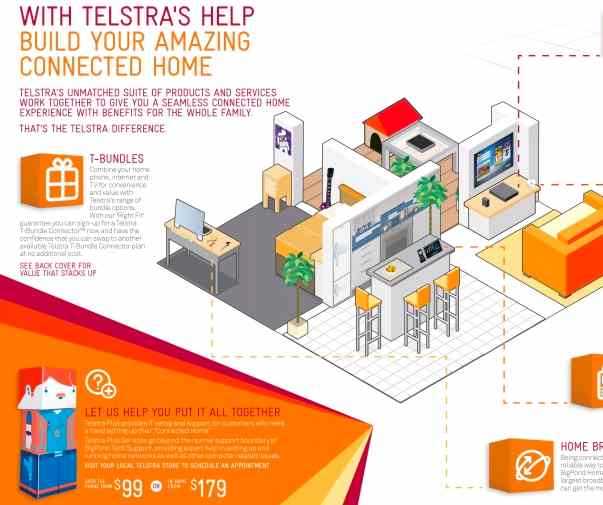Will Australia’s telecommunications giant Telstra finally make good on a plan to challenge Australia’s incumbent energy utilities and launch a major charge into the energy market?
It’s an idea that has been talked about ever since analysts and consultants first thought of how telcos could bring about a “Kodak” moment for energy utilities as new technologies such as rooftop solar and distributed battery storage upended decades-old business models.
 And the idea seemed to have greater currency when Telstra, the dominant telco in Australia, snapped up Ben Burge, the feisty former head of Powershop who was hired in early 2016 to launch a team that would look at offering home energy services to millions of consumers.
And the idea seemed to have greater currency when Telstra, the dominant telco in Australia, snapped up Ben Burge, the feisty former head of Powershop who was hired in early 2016 to launch a team that would look at offering home energy services to millions of consumers.
It’s been just over two years since the Burge hiring was announced – and apart from some important and ground-breaking contracts for big solar and wind farms, and a plan to offer its considerable battery storage for use in the grid – the retail push has since been downplayed.
You could put the blame on the complexity – business, economic, technical and cultural – in encouraging an industry monolith to turn around and challenge other giants in a new market.
But analysts say it still makes sense, and they suggest that Telstra could be well advised to invest up to $20 billion in Australia’s energy market, in what would be the most dramatic intervention in the top end of the industry for decades.
In a new report, telco and energy market analysts at Morgan Stanley look at Telstra’s likely choices, and conclude that combining telecommunications and energy retailing – as some smaller players have already done – could be much more attractive than other options.
“We think the energy idea could have merit for (Telstra) too … potentially on a much larger scale,” the Morgan Stanley analysts write.
“(Telstra) could employ various strategies, ranging from a low-risk approach, becoming a retail reseller of energy … or a bigger and bolder move to become an outright owner and operator of integrated energy assets.”
Morgan Stanley notes there is some pressure on the Telstra board to act soon. By 2020, its “one-off” payments (worth $1.4 to $1.9 billion) from the rollout of the NBN will come to an end.
That will leave a significant gap in earnings from which to make dividend payments. The options are expanding overseas, investing in “new technologies” – both considered risky – or the energy option.
Morgan Stanley insists that its report is “speculative and exploratory”, but it says Telstra needs to do something, because it is facing rising competition in key core markets, particularly mobiles.
“As a precedent, the junior telcos in Australia, such as Vocus (VOC) and Amaysim (AYS), have already acquired energy retailing businesses of their own,” the analysts note.
“They talk positively of the strategic merits in cross-marketing energy products to their telco client base, and vice versa. We think the same logic could apply to TLS and its 5.1 million household customers (and retail client base of 17.6 million Australians).”
It notes that one key difference is that Telstra is obviously a substantially larger company than either Vocus or Amaysim. So, to fill in its post-NBN gap in core earnings of around $1 billion to $2 billion, Telstra may have to spend capital of up $10-20 billion.
“Owning energy assets vs. undertaking new tech investments/acquisitions may not sound as exciting,” the analysts say. But, energy’s intrinsically secure long-term cash flows could not only underpin the company’s existing dividend payment, “but also provide potential for dividend upside.”
Would they? Could they?
Morgan Stanley admits that its interest was piqued by the series of smaller-scale announcements already undertaken by Telstra. But all were relatively significant.
The first was contracting to take the output from the new 68MW Emerald solar farm in Queensland, the first major corporate power purchase agreement signed by a big Australian company (although zinc refiner Sun Metals is building its own 116MW solar farm).
The second came in December when Telstra led a consortium that agreed to buy the output of the 226MW first stage of the Murra Warra Wind Farm near Horsham in western Victoria, which has a total permitted capacity of 429MW.
Telstra has said that this is just the start of its solar and wind farm plans.
And the third was an indication that Telstra was looking to use its near 1GW of battery storage capacity to offer emergency back-up for the grid, ensuring it could meet critical peaks in the middle of the heatwaves.
Telstra is one of the country’s biggest energy users – accounting for around 1 per cent of total consumption. It is one thing to look after its own energy needs, quite another to supply energy to others. But the consortium it put together for Murra Warra suggests such conversations are happening.
It notes that while Testra could be outmuscled by the likes of Facebook, Google and Amazon on a global scale, it has considerable weight in the domestic economy.
And energy retailing is a 2.5 times bigger market in Australia than the telco market – notwithstanding its regulatory and policy risks and uncertainties. (See table above).
Morgan Stanley says that Telstra would be able to offer a competitive bundle of mobile + broadband + pay TV + energy.
“Consumers would benefit from price discounts and the convenience of dealing with one provider,” the analysts say.
“Importantly, we also believe that bundled products can drive lower churn. For example, (New Zealand’s) TrustPower , which offers bundled products (power + gas + broadband + phone) has observed churn rates up to 37 per cent lower for bundle customers.”
They suggest a number of possible scenarios for a push into energy.
One is building on the two PPAs – Emerald and Murray Warra – (Telstra has signalled that this is just the start of its wind and solar plants) and retail excess power to others, which would mean obtaining a retail licence to do so.
Another could be becoming a standalone retailer or reseller, buying electricity and or gas from wholesale markets and selling them on to retail customers. This is the model adopted by Amaysim when it bought Click Energy.
The other alternatives are entering a joint venture or partnership with an existing integrated energy player, which would involve less risk (if they could find a suitable partner), or they could merge with one of those companies (higher risk, potentially higher reward).










